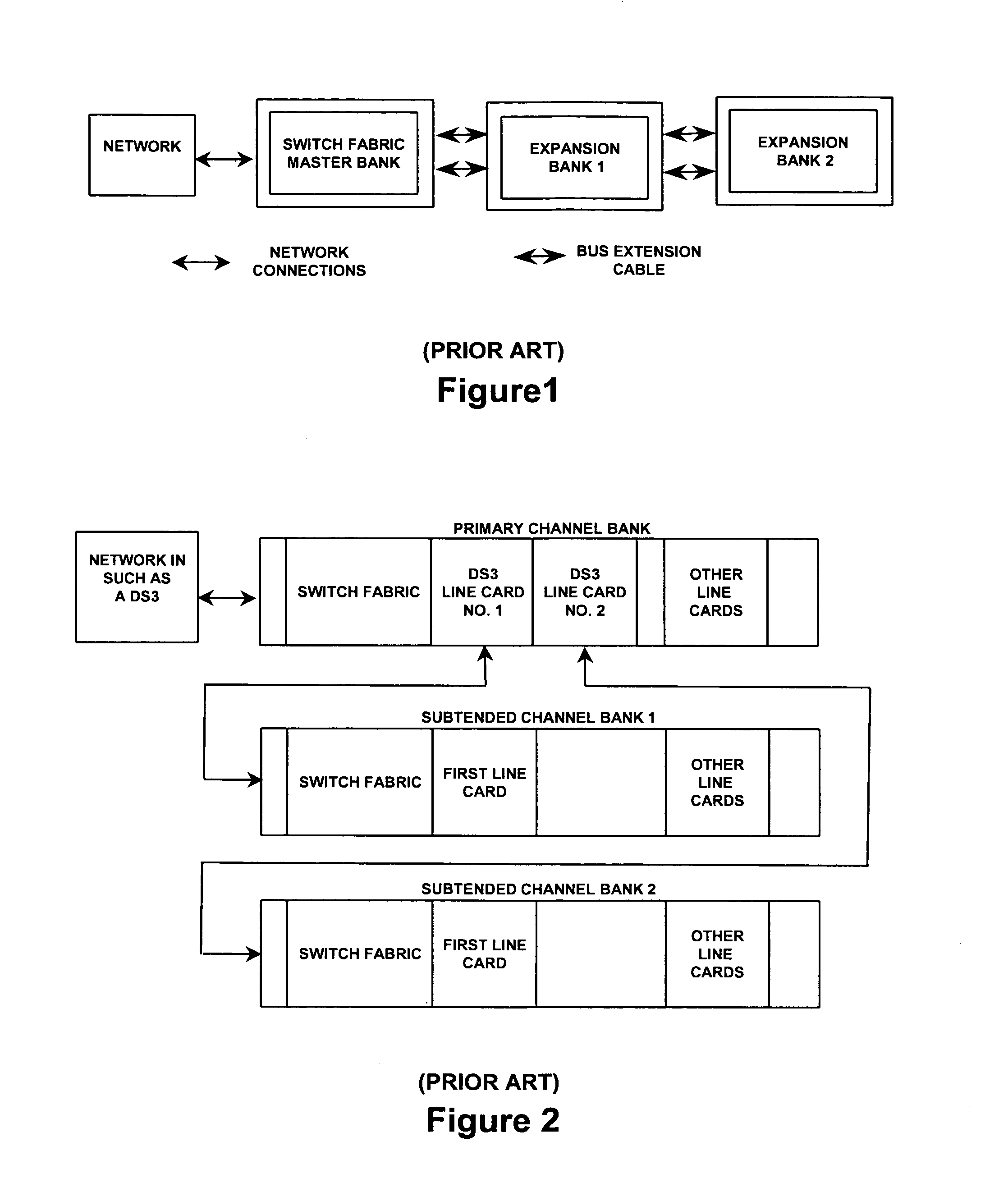System architecture for linking channel banks of a data communication system
a data communication system and system architecture technology, applied in the field of telecommunication systems and subsystems, can solve the problems of limited network card extension approach, bulky and expensive bus extension cables, and limited noise coupling as to the number of channel banks
- Summary
- Abstract
- Description
- Claims
- Application Information
AI Technical Summary
Benefits of technology
Problems solved by technology
Method used
Image
Examples
Embodiment Construction
[0054]Before detailing the single switch-fabric based, multi-channel bank architecture in accordance with the present invention, it should be observed that the invention resides primarily in a prescribed arrangement of conventional digital communication circuits and components and attendant supervisory communications microprocessor circuitry, as well as application software therefor, that controls the operations of such circuits and components. In a practical implementation that facilitates its incorporation into commercially available digital telecommunication transceiver equipment, the inventive arrangement is preferably implemented using field programmable gate array (FPGA)-configured and application specific integrated circuit (ASIC) chip sets. In a hardware implementation of such chip sets, digital ASICs are preferred.
[0055]Consequently, the configuration of such subsystems and components and the manner in which they may be interfaced with both serial and parallel telecommunica...
PUM
 Login to View More
Login to View More Abstract
Description
Claims
Application Information
 Login to View More
Login to View More - R&D
- Intellectual Property
- Life Sciences
- Materials
- Tech Scout
- Unparalleled Data Quality
- Higher Quality Content
- 60% Fewer Hallucinations
Browse by: Latest US Patents, China's latest patents, Technical Efficacy Thesaurus, Application Domain, Technology Topic, Popular Technical Reports.
© 2025 PatSnap. All rights reserved.Legal|Privacy policy|Modern Slavery Act Transparency Statement|Sitemap|About US| Contact US: help@patsnap.com



